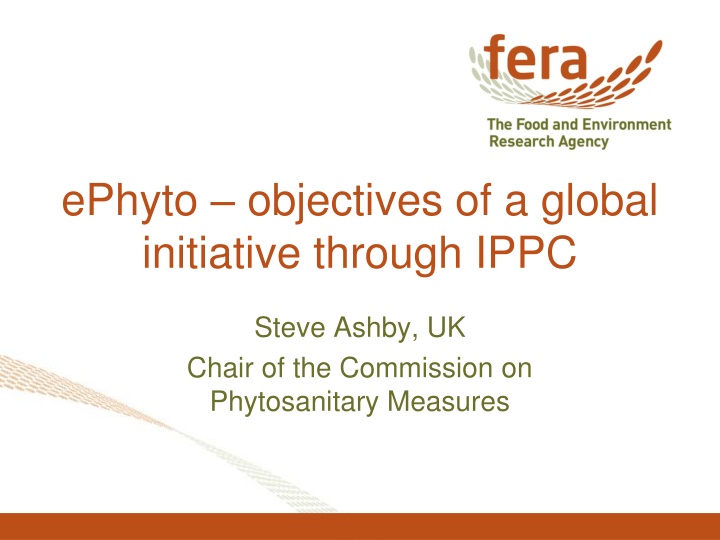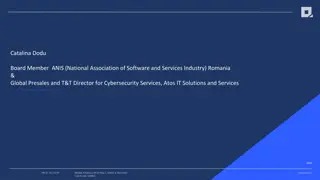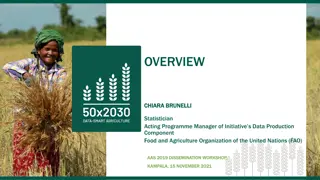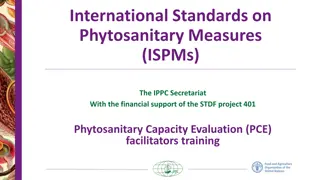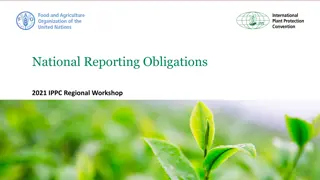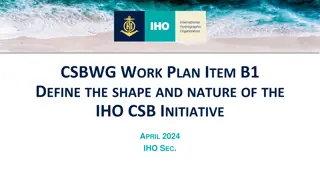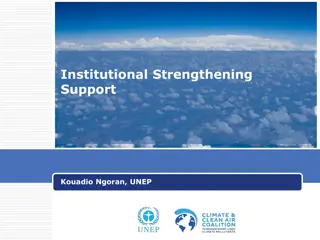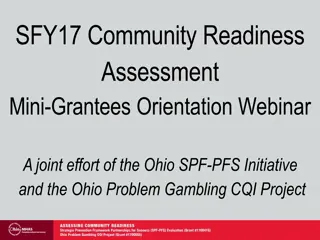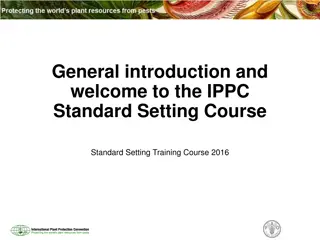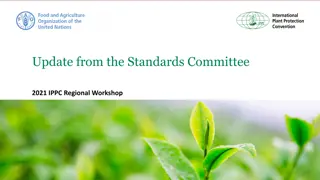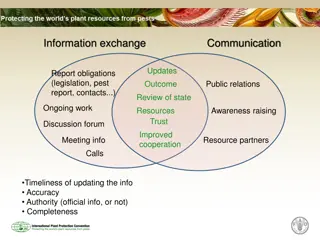Objectives of a Global Initiative through IPPC by Steve Ashby
Objectives and purpose of the International Plant Protection Convention (IPPC) led by Steve Ashby. Learn about the history, phytosanitary certification, and the development of electronic phytosanitary certificates to enhance global plant health security.
Download Presentation

Please find below an Image/Link to download the presentation.
The content on the website is provided AS IS for your information and personal use only. It may not be sold, licensed, or shared on other websites without obtaining consent from the author.If you encounter any issues during the download, it is possible that the publisher has removed the file from their server.
You are allowed to download the files provided on this website for personal or commercial use, subject to the condition that they are used lawfully. All files are the property of their respective owners.
The content on the website is provided AS IS for your information and personal use only. It may not be sold, licensed, or shared on other websites without obtaining consent from the author.
E N D
Presentation Transcript
ePhyto objectives of a global initiative through IPPC Steve Ashby, UK Chair of the Commission on Phytosanitary Measures
INTERNATIONAL PLANT PROTECTION CONVENTION (IPPC) Brief history IPPC first agreed in 1951 Revised in 1979 and 1997 1997 changes came into force in 2005 Now 177 members 14 Plenary sessions: 7 ICPMs/7 CPMs 36 Standards agreed, plus 3 Diagnostic Protocols and 14 Phytosanitary Treatments
Purpose (from Article 1) Securing common and effective action to prevent the spread and introduction of pests of plants and plant products, and to promote appropriate measures for their control
Article V Phytosanitary Certification V.2 second indent: Phytosanitary certificates, or their electronic equivalent where accepted by the importing contracting party concerned, shall be as worded in the models set out in the Annex
ISPM 12 Phytosanitary Certificates The requirements and guidelines for the preparation and issuance of phytosanitary certificates o 1.4 Electronic phytosanitary certificates may be issued where accepted by the NPPO of the importing country
Purpose of Phytosanitary Certification To attest that consignments of plants, plant products or other items meet the importing country s phytosanitary import requirements i.e. My goods don t threaten plant health in your country, as long as you have made me aware of what risks you are concerned about
Electronic PC Optional NOT a new obligation Concerns country to country communications, not internal systems Will be a parallel system to paper certification unless and until countries are comfortable with it
Why develop Electronic PCs? Cuts down on exchange of paper certificates Increase in speed Consistent handling of all the data Reduces risk of fraud Integration with Customs systems
Why is IPPC involved? Global forum for plant health issues Some countries are moving this way, so we need a harmonised system CPM priority Helps ensure developing countries are involved
Challenges COST including cost/benefit assessment Limited resources in IPPC to coordinate the work Technological requirements Possible need for thousands of bilateral agreements Raising awareness and understanding
Meeting the challenges Trial systems early adopters - will show the way and reduce costs and raise understanding for the majority Global hub could provide a readily accessible system, providing some of the technological requirements & cutting out bilateral agreements
What can CPM members do? Develop their awareness Participate in workshops Raise colleagues awareness Discuss with their IT providers Discuss with their inspectors Discuss with main trade partners Seek necessary resources Invest to save?
Objectives A harmonised electronic certification system Affordable for all participants Can be operated by all participants A system that improves the safety of trade in plants and plant products
